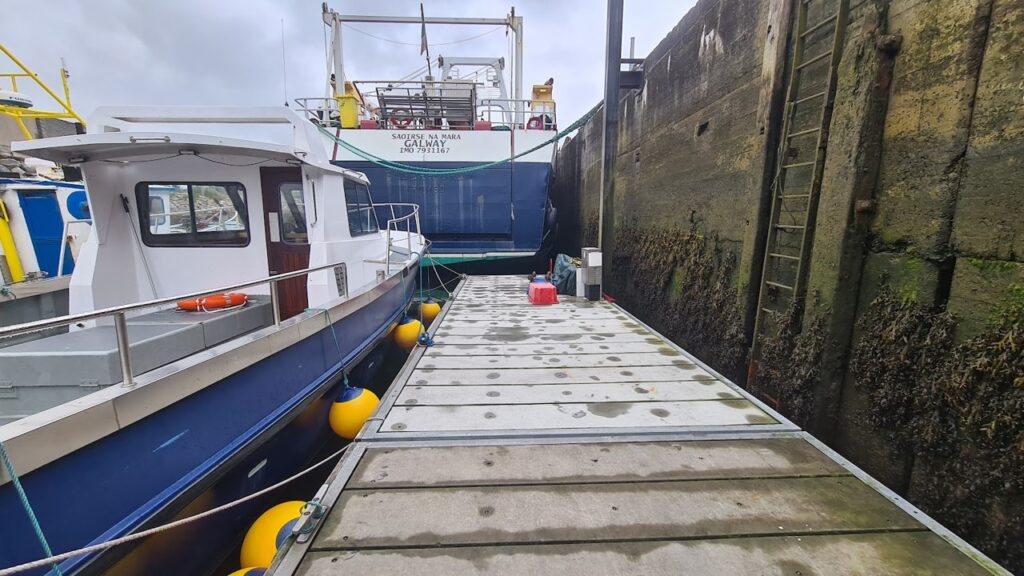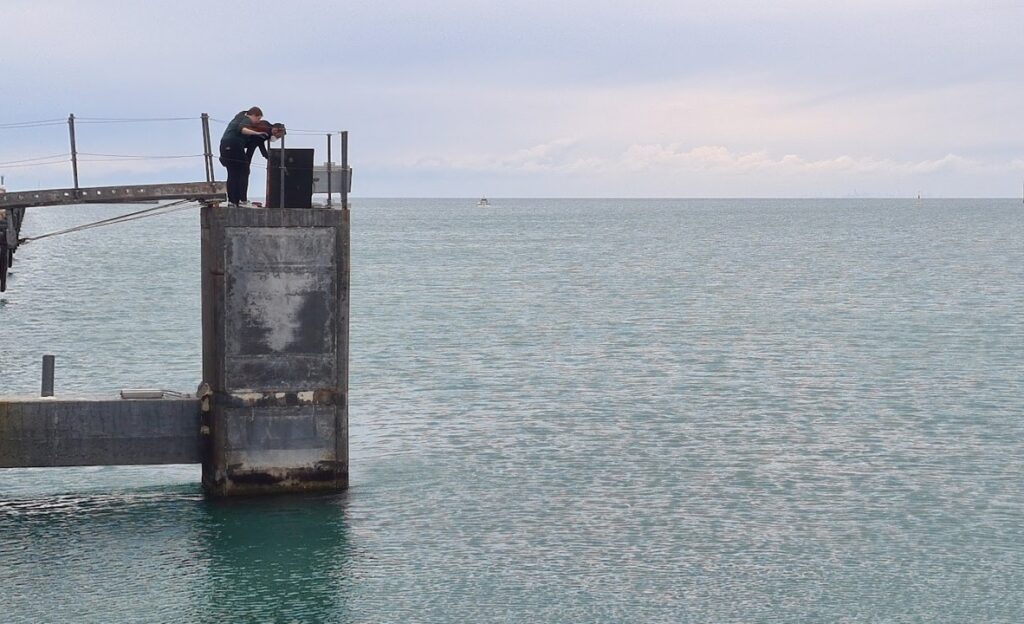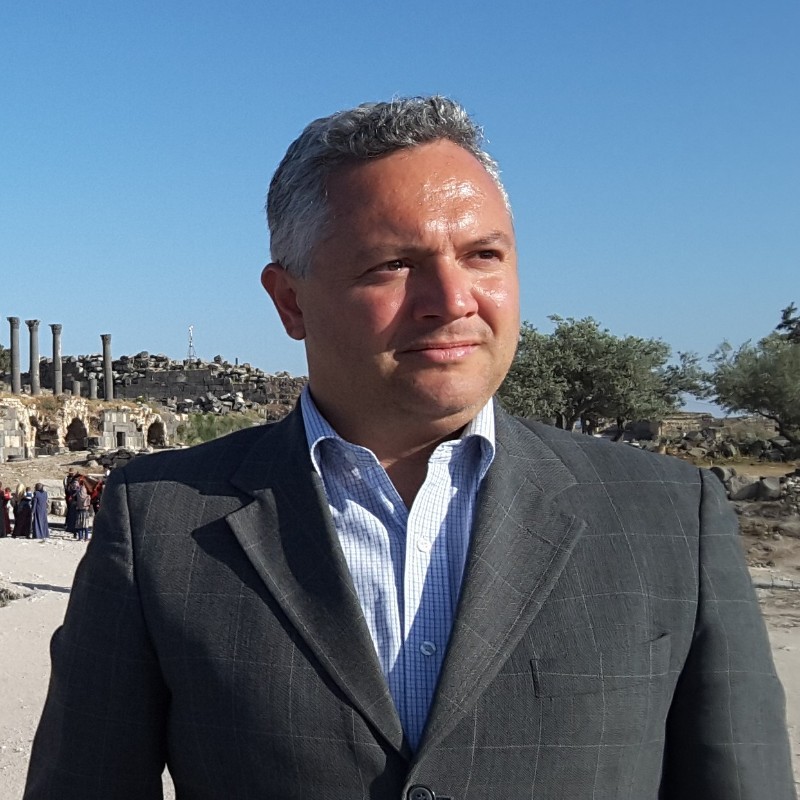Coastal infrastructure assets include ports and critical structures which serve as catalysts of economic development, supporting global supply chains. Coastal structures are directly exposed to extreme aggressive marine environments and to the risk of climate change impacts. Coastal transport infrastructure and ports have a strategic role in global trade and disruptions have significant economic impacts. Coastal structures have a long service life with significant impacts and major consequences in case of failure. Therefore, securing their resilience is critical. Coastal infrastructure primarily consists of reinforced concrete structures under marine exposure conditions (XS) which experience several time-dependent durability problems, requiring early and often continuous maintenance. Typical pathologies include excessive corrosion, accompanied by cracking and spalling of concrete cover. It is reported that 50% of repaired concrete structures failed again, 25% of which in the first 5 years, 75% within 10 years and 95% within 25 years. In view of the long service life of coastal structures, the major consequences of failure and associated economic impacts, resilience building necessitates a re-thinking of established practices and approaches in engineering.
The durability and long-term behaviour of structures under extremely aggressive exposure conditions can highly benefit from the use of high-performance materials, in the framework of durability-based design approaches. The Engineering Materials and Structural Monitoring Research group at the University of Malta worked as a key partner in the ReSHEALience Horizon 2020 Project (GA 760824), with the main objectives being the development of [a] an Ultra High Durability Concrete (UHDC) for Extreme Aggressive Exposures (EAE) and (b) a Durability Assessment-based Design (DAD) methodology to improve structural durability and predict long-term performance under EAE. UHDC is defined as a strain-hardening (fibre-reinforced) cementitious material with functionalizing micro- and nano-scale constituents especially added to obtain tailored durability in the cracked state. The project addressed the development of UHDC with self-healing properties, by upgrading the UHPC/UHPFRC concept through the incorporation of tailored nano-scale constituents including alumina nano-fibres, bio-based nano-cellulose and crystalline admixtures. The project further focused on upgraded experimental methods to validate the durability in service conditions and the development of theoretical models to evaluate the ageing and degradation of UHDC structures in order to predict their lifespan. New design concepts were proposed and further validated through long-term monitoring of six full-scale proofs-of-concept structures. The structures which were designed, constructed and monitored, were selected as representative of cutting-edge economy sectors, including Green Energy, Blue Growth and the conservation of Coastal reinforced concrete heritage structures. The prototype structures included a cooling tower water basin, a geothermal mud collection tank in Italy, a floating offshore wind turbine, a floating platform installed offshore from the Spanish Mediterranean coast, a precast breakwater installed along the British coast and the restoration of a severely damaged ater tower in the Grand Harbour in Malta.
The floating structures developed in our project, push the boundaries in engineering to stimulate and induce innovation in coastal and marine infrastructure. The developed offshore projects including the floating wind turbine, the floating platform and the floating breakwater, were designed and constructed using the new technologically innovative UHDC. The floating structures are monitored over time to assess their performance in EAE, using advanced sensor network systems for durability and structural health monitoring. The projects secured the achievement of a level equal to Technolgy Readiness Level 7. The ReSHEALience Project addressed the needs of structures exposed to extreme aggressive environmental conditions through an innovative material concept and a tailored durability-based holistic engineering design approach. The demonstration projects designed, constructed and monitored in extreme aggressive environments including offshore floating structures, allow for an appreciation of the true performance of materials and structures over time.
Offshore energy infrastructure has developed rapidly to address decarbonisation goals. The ratification of the Paris Agreement pushed low-carbon targets to the top of the policy agenda, further promoting sustainable energy systems. This stimulated further offshore energy structures with a growing interest in exploiting the potential of offshore infrastructure in deeper waters in Europe, through Floating Sustainable Energy Islands. Ultra-High Performance Concrete – UHDC prototype structures and floating islands, as effectively developed through this project, present an important technological development in achieving resilient infrastructure and in supporting the decarbonisation goals.




Prof. Ruben Paul Borg is Principal Investigator, the ReSHealience Horizon 2020 Project (GA 760824), at the University of Malta (ruben.p.borg@um.edu.mt)
https://www.um.edu.mt/ben/constructmanage/ourprojects/thereshealiencehorizon2020project
Third Edition (Sept/Oct 2022)
Heritage Restoration

Prof. Perit Ruben Paul Borg
Prof. Perit Ruben Paul Borg is Leader of the Water Tower Restoration Project and Principal Investigator of the ReSHEALience Horizon 2020 Research Project. He is a consultant Materials and Structural Engineer, Academic and Coordinator of the Industrial Heritage Platform at the University of Malta.
